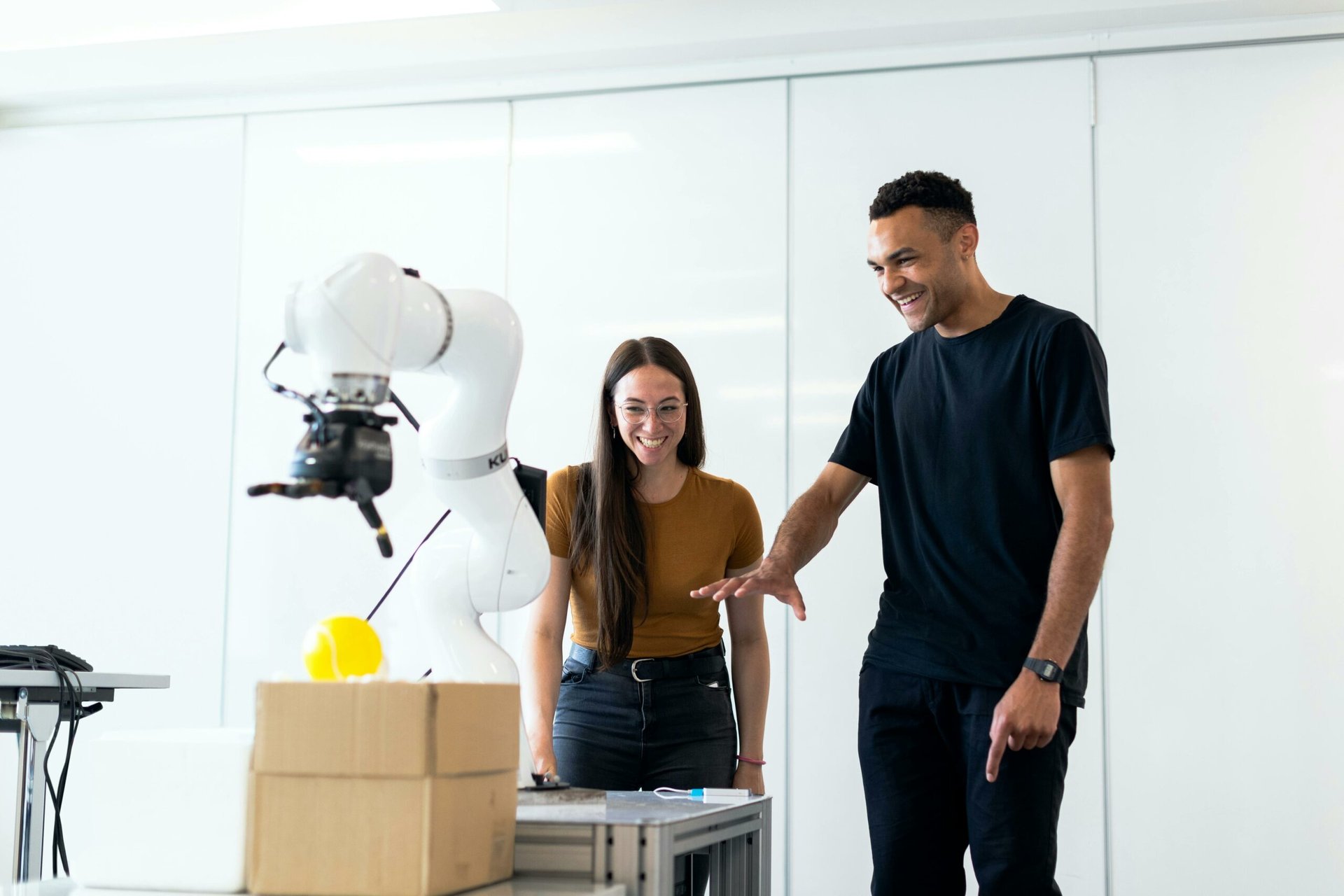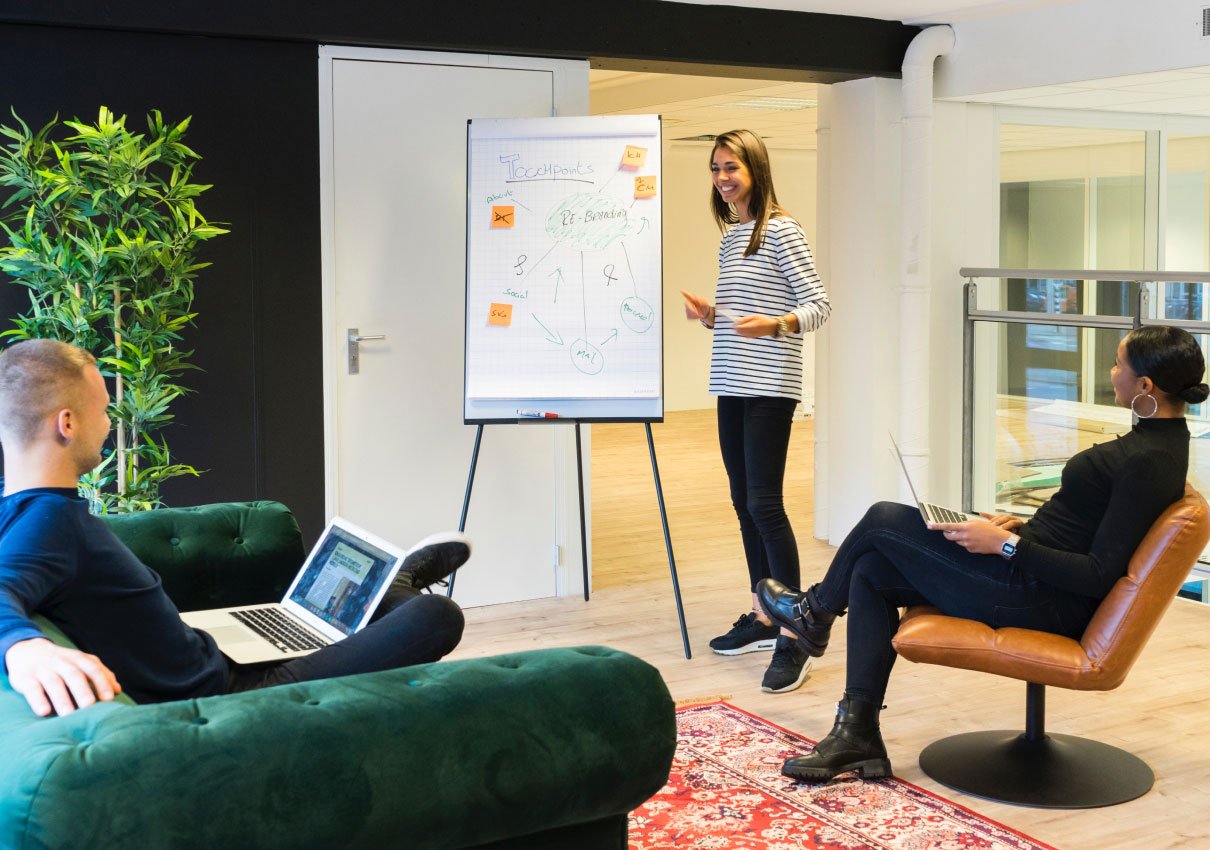Our services
Recruitment services for robotics & automation engineers in the aerospace and defense sectors

Specialized in automating work and tasks through clever systems and robots, robotics and automation engineers are masters of programming, machine learning, electronics, and software engineering. They automate formerly time-consuming or complex work and develop robots to perform labor-intensive and hazardous tasks.
Industrial robotics & automation allow companies to operate higher volumes and complexities in manufacturing and other fields to improve efficiency, reduce costs, and create safer work environments.
Cad Crowd AI’s network of experts and AI guarantee quick turnaround times and a bespoke aerospace engineer that you can have confidence in onboarding and establishing as a trusted professional.
Talk to us and hire your talent today!
Roles & Specialties
As the field and scope of robotics and automation become more sophisticated, there is a growing need for technicians and experts who can design, program, and maintain these systems.
Operator interface
As much as companies aim to automate processes and have made deep progress towards that front, robots are only as good as their ability to reliably and effectively communicate with a human controller.
This means that operator interfaces, referred to as Human-Robot Interfaces (HRIs), are crucial. Usually, HRIs are the method by which humans would give pre-programmed commands to a robot.
Operator interfaces must be intuitive to use and enable operators to communicate effectively with the robot in order for operators to execute tasks accurately and efficiently.
Mobility or locomotion
Robotics engineers must ensure that robots can move in their environment. Termed locomotion, robotics engineers study the environment a robot will move in to create tailor-fit solutions.
For example, some robots may mimic human movements, like in assembly lines, or a robot might need wheels, like rovers deployed on extraterrestrial bodies.
In terms of automation, while mobility can vary in complexity and approach, autonomous robots rely on cameras, radar, lidar, and other sensors to collect information about the environment and react accordingly in accordance with their mission and preprogrammed objectives.
Manipulators and effectors
For robots to be worthwhile, they must be able to interact with their environment and the objects and tools they need to do their jobs. Robotics and automation engineers combine their knowledge to craft and design manipulators and effectors—parts of the robot that allow it to pick up and manipulate objects separate from itself and the system.
Engineers may employ human-like digits and appendages that mimic human dexterity to accomplish given tasks. In industries, these parts may be commonly known as pincers, claws, pushers, or cutters, and they are uniquely designed to work with various materials and equipment.
Programming
Programming is the language operators use to communicate with robots. While traditionally, autonomous actions that robots performed had to be programmed, advanced programming now allows automated robotic systems to learn and adapt to environmental changes.
Robots may be programmed using thousands of different programming languages, and some particularly advanced versions can self-program using AI and machine learning.
Sensing & perception
Robots use sensors to gather information about themselves and their environment. This information helps them navigate the space around them to complete tasks and directives. Robots also collect information to help decide their actions moving forward, depending on the objects they encounter and their surroundings.
Robotics engineers design customized sensor systems to deploy robots for unique tasks and challenges, allowing them to be effective.
Research and development
Robotics and automations engineers need to study and incorporate many different fields and concepts to help them design and bring to life these robotic, automated systems.
They must keep up-to-date with the latest technologies, frameworks and methodologies to help them break through the current limitations of robotics.
Trends for robotics & automation engineering
Automation and robotics pave the way towards actualizing tasks that may be too much or dangerous for human hands. They also allow us access to hazardous and uninviting terrains and environments safely and remotely.
Improved productivity & quality
Automation and robotics allow employees to focus on work that requires their attention and leave the arduous, dangerous, and repetitive tasks to robots. It also allows companies to continuously produce value without fatiguing its workforce to keep up with demands.
Fewer errors mean better quality and a faster production and manufacturing line.
Reduced costs
Companies can reduce costs by letting robots and automation do the brunt of the work and save up on expedient and unexpected expenses due to manufacturing or production issues. Though not a replacement for human workers, robots and automation can also take on tasks better suited to machines and virtual systems in the first place, diverting resources to other important areas.
Improved data accuracy
With the advent of Internet-of-Things and edge computing, teams will find it much easier to track and set up analytics for robots and automation than human users, opening up new opportunities to optimize given tasks.
Better security and safety
Robotic systems can better avoid security issues caused by human users and create more robust production lines that can run almost indefinitely.
Differences between automation and robotics
Robotics is a field that combines computer science with engineering to create robots that perform tasks. Some robots may be built for general purposes, while others are designed to fulfill specific roles.
On the other hand, automation is a field that uses algorithms, software, and other technologies to carry out tasks in place of humans. These can be applied to physical and virtual tasks and have many functions, from simple to complex ones.
Differences between automation and robotics
There are three types of automation:
- Software automation uses computer programs to carry out algorithmic tasks in virtual environments. It is used to automate many tasks, such as filing forms automatically.
- Robotic process automation is software designed to use a computer interface like human workers. RPA tools may also use machine learning or AI to help perform rule-based tasks more effectively.
- Industrial automation uses machinery to control physical processes. This includes CNC machines and automated inspection equipment. Industrial automation may also include some form of robotics or robot automation.
Not all robotics require automation. However, robots are increasingly given autonomy using machine learning, AI and other algorithmic technologies.
Shaping the
future
Robotics & automation engineering provides unparalleled flexibility, adaptability, control and efficiency.
The field of automation and robotics seems filled to the brim with innovation. Combined with the emergence of machine learning, AI, wearable technology, and other exciting technologies, it is no surprise that robotics and automation engineers will become an even more essential force in aerospace and defense.
AI and machine learning: Leading the way towards transforming robotics as we know it, businesses across the globe are leveraging these technologies to enhance decision-making, automate repetitive or dangerous tasks, and gain insight from vast datasets.
AI and machine learning promise to transform how robots learn and operate and expand the possibilities of robotics and automated systems.
Industry 4.0 and smart manufacturing: Industry 4.0, known as the fourth industrial revolution, aims to transform manufacturing by leveraging Internet-of-Things, big data, edge computing and advanced automation.
Industry 4.0 envisions interconnected systems and data-driven insights for efficient manufacturing. IoT devices can collect real-time data and analyze it through big data analytics.
A likely outcome of this industrial revolution is smart manufacturing, where companies are using IoT-connected robots for real-time information collection, adaptability and boost productivity.
Humanoid robots & soft robotics: A prominent trend in robotics is humanoid robots taking the shape (and abilities) of humans. Robotics engineers are creating human-like robots that replicate human appearance and movements.
Meanwhile, soft robotics aims to take it even further by providing robots with the dexterity and precision that human digits have when crafting.
Collaborative robots: Cobots are designed to work alongside humans to boost efficiency, safety, and flexibility in industrial processes. They are a cost-effective way to integrate robots easily while allowing for adaptable and responsive solutions to different industrial needs.
Augmented reality: Augmented reality is gaining momentum in its applications, revolutionizing how we interact with technology and robots. It enhances our real-world perception by overlaying digital information onto physical surroundings and objects. It has applications in education, training, and navigation and bridges the gap between virtual and physical realms, enhancing the human experience.
AR technology is becoming increasingly accessible and sophisticated, with smart glasses recently entering the mainstream market.
The challenge around hiring robotics engineers
Because of the challenges surrounding the aerospace and defense industry, automation and robotics engineers are expected to be vital in solving many problems and developing discoveries. A&D companies are tasked with finding the best and brightest to boost their innovation and elevate their products and services to new heights.
Apart from this, for a delicate and sensitive sector such as aerospace and defense, there is a need to comply with different regulatory standards such as ITAR on top of the already stringent standards and policies specific to software.
Companies are obligated to keep up with the fast-paced developments in technology. With all the overlapping responsibilities and requirements combined with hard-to-source talent, organizations must be able to fill succinct roles decisively while ensuring a fostered and curated workplace culture.
In a highly regulated environment, there is little margin for error, and stakeholders must work together to ensure that progress toward mission success is not halted simply due to a lack of skilled personnel. Mitigating risks and optimizing systems need a critical thinker capable of pushing the team in the right direction. We specialize in finding candidates that fit your varying needs.
We consider the candidate and how their other talents and interests might align and positively affect your workforce. Their personalities, work ethic, training, background, and history are determining factors that can make or break a team’s mission. The organizations they’re part of, their passions, hobbies – these are traits that can add intangible value to your project and mission, and their fit in regards to your organization’s culture.
With incoming ambitious innovations that make many manufacturing ideas more and more a reality, there is limitless room for growth in the industry. Likewise, there is an increasing level of competition needed to keep up with the advancements. Needless to say, this makes it even more difficult to source talent with potential and fundamental skills critical to your project.
Cad Crowd AI’s years of experience in working for mission-critical projects and clients guarantee that our technical recruiting expertise can help fill your requirements quickly.
Expanding our horizons with innovation, heart, and decisiveness
Since the Wright brothers first found a way to soar the skies in 1903, air travel has altered the way we conduct business on a global scale, meet and visit loved ones & colleagues, and learn more about our skies and the world. There is still much room for improvement, and the many challenges tackled and posed by our evolving aerospace needs mean that hiring the talent you need at the right time can be the game-changer for any organization.
Those who are aligned with your goals will better understand the actions and milestones they need to accomplish. The right person will rise to the occasion and tackle the challenges simply because they are particular, passionate and have strong values and beliefs towards them.
Challenges, for the most skilled, are simply clues to opportunities that lie await. We’re experts in maximizing opportunities for those who have their hearts in the right place.
Both exciting and challenging, robotics engineers are faced with new opportunities and discoveries every day, which is why focus is key. With our technical recruiting expertise, we are faithful to your mission, and are determined to locate individuals with outstanding prowess that will help you succeed.
Talk with one of our technical recruiters today and find out how Cad Crowd AI can source & hire professionals that embody passion, selfless drive, and the determination to overcome obstacles in pursuit of safer, cleaner skies.

Cad Crowd AI
Cad Crowd AI stands as a premier staffing agency in the aerospace and defense sector, specializing in the recruitment of highly specialized engineers for manufacturing, defense, and aerospace contractors across the United States.
Operating out of Los Angeles, California, we have a proven track record of sourcing technical talent for some of the world’s most innovative and mission-driven organizations, including NASA, Jet Propulsion Laboratories (JPL), the US Army, the US Army Corps of Engineers, Argonne Labs, and the Boston Consulting Group (BCG).



